10 Black artists to see in the Columbus Museum of Art

Strolling through many American art museums and galleries, a patron might erroneously equate the word “artist” with “white and male,” but the Columbus Museum of Art is working diligently to change that impression.
“We know that America is much more than that," said Deidre Hamlar, director of the Aminah Robinson Legacy Project and curator at large at the museum. "Our institution has made an effort, number one, to acquire or accept as gifts works by artists who represent different cultures.”
Hamlar said it’s “kind of a conundrum” that some museumgoers assume there are no Black artists’ work on display at the museum because of how the collections are categorized.
More:Art exhibits and projects to see during Black History Month
“I think there’s a presumption that we don’t have Black artists on the wall because we don’t list them as African American artists, we list them as American artists,” she said.
Calling the Columbus Museum of Art “a work in progress,” Hamlar said there is a conscious effort by the curatorial and education departments to be inclusive of artists that represent the American spectrum and to embrace "a world view" of people from different backgrounds and experiences.
“That’s why I’m so glad to see these works in the gallery. They add to the American story," she said.
The museum’s Black artists are icons of both American and Black American art history. But Hamlar recalled a time when representation was scant.
“When I was here in the ‘90s, working in the education department, we had ‘People, Places and Things,’ one of the museum’s first shows for African American art. It filled up one gallery,” she said. “I’d say we could fill a museum with works by African Americans now, so we’ve come a long way.”
The pieces are rotated periodically, both to preserve them and to give museumgoers exposure to a variety of artists, their styles and subject matters, be they social issues, streetscapes or otherwise.
“As a curator, you think about how these artworks speak to each other, as well as speak to their audience,” Hamlar said.
More:Dignity, strength of Black and indigenous people captured in dual exhibits
When viewing these works, Hamlar said audiences should ask themselves, “Is it something that you haven’t seen before? Is it new? Is it giving you some history you didn’t know before? That’s what it should be doing.”
10 Black artists featured at the Columbus Museum of Art
There is a wealth of art by Black creators in the museum's collections, Hamlar said. Here is just a sampling of the artists represented on the gallery walls.
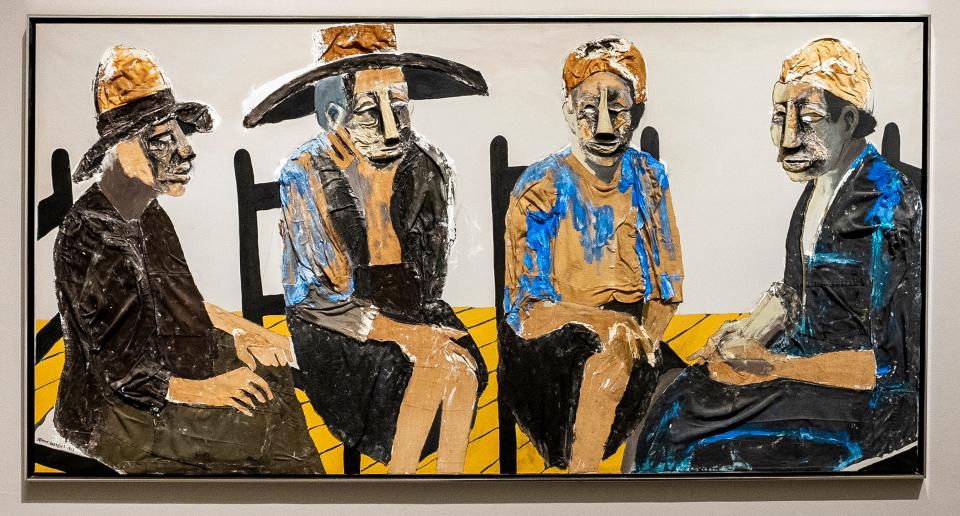
Benny Andrews (1930-2006)
As much an activist as an artist, Andrews was co-founder of the Black Emergency Cultural Coalition (BECC), which protested "Harlem on My Mind," a 1969 photo exhibit at the Metropolitan Museum of Art that claimed to represent New York's historically Black neighborhood but featured no black artists. In addition, the BECC-led boycott of another exhibit led to 15 artists withdrawing their work from the show.
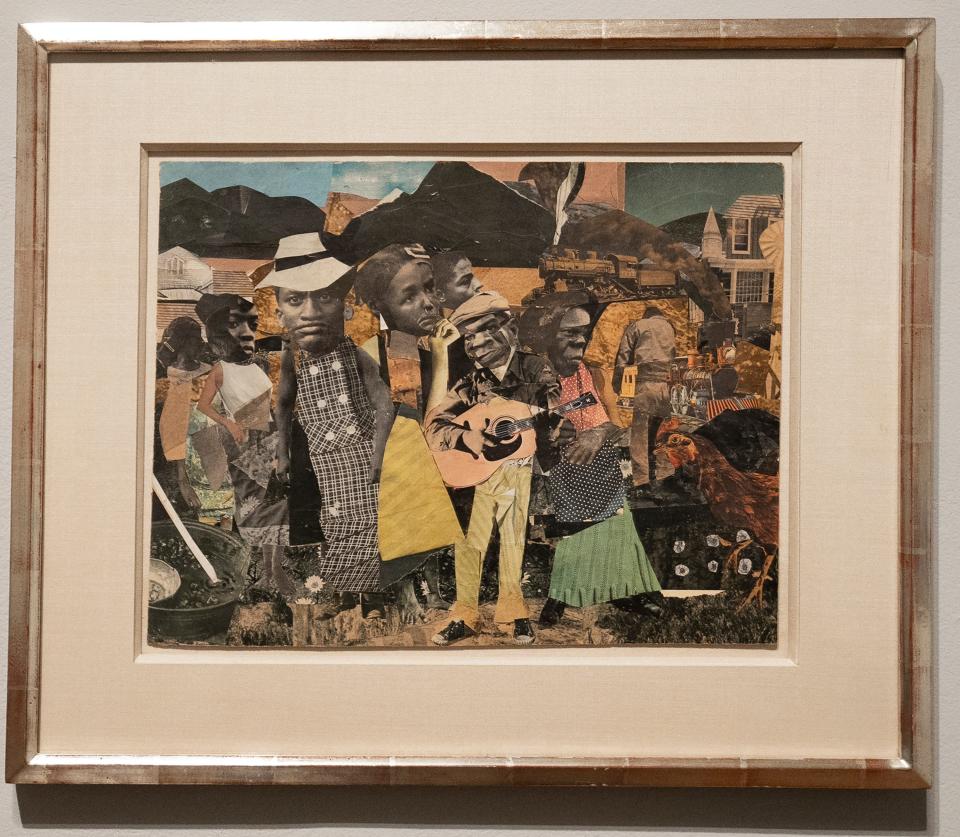
Romare Bearden (1911-1988)
Bearden, who studied in the U.S. and Paris, was known for his richly textured collages. A man of many interests, he was a writer who also designed costumes and sets for the Alvin Ailey American Dance Theater, as well as programs, sets and designs for Nanette Bearden's Contemporary Dance Theatre.
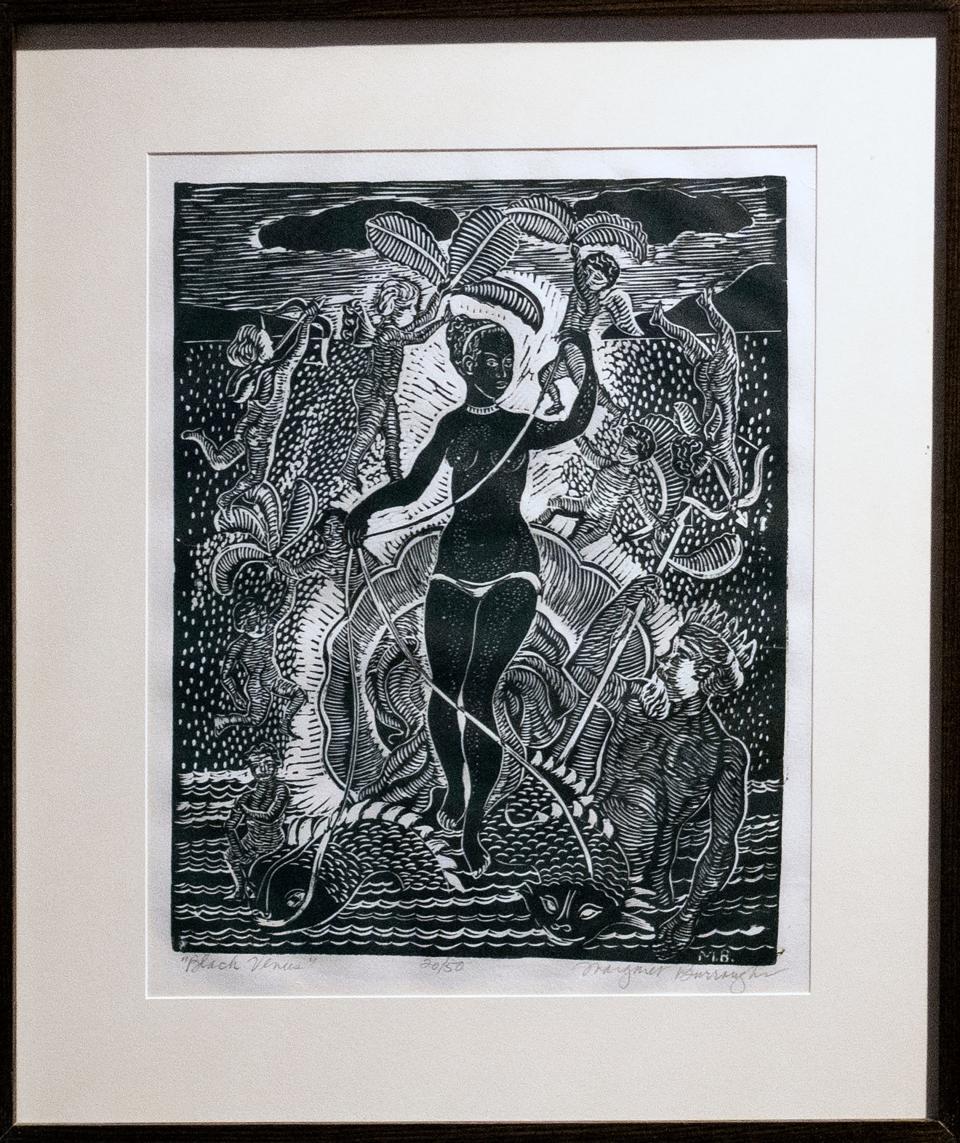
Margaret Burroughs (1915-2010)
Burroughs made many contributions to Black arts and culture including founding the South Side Community Art Center and the Ebony Museum of Chicago, now known as the DuSable Museum of African American History. She worked in many mediums, including sculpture and painting, but is most renowned for her skills as a printmaker.
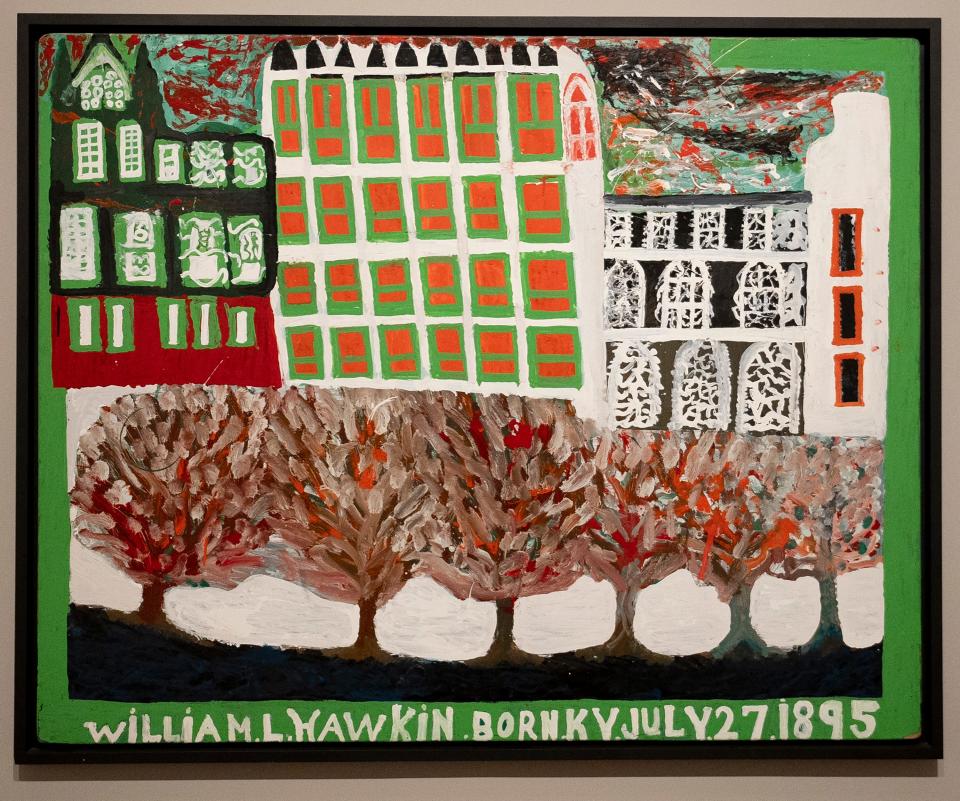
William Hawkins (1895-1990)
In 2018, the Columbus Museum of Art presented a solo exhibition of works by Hawkins, a self-taught artist who moved to Columbus in 1921. He favored creating unconventional depictions of well-known buildings in the Columbus cityscape. The museum has 10 of his works, one of which is on view in Gallery 2.
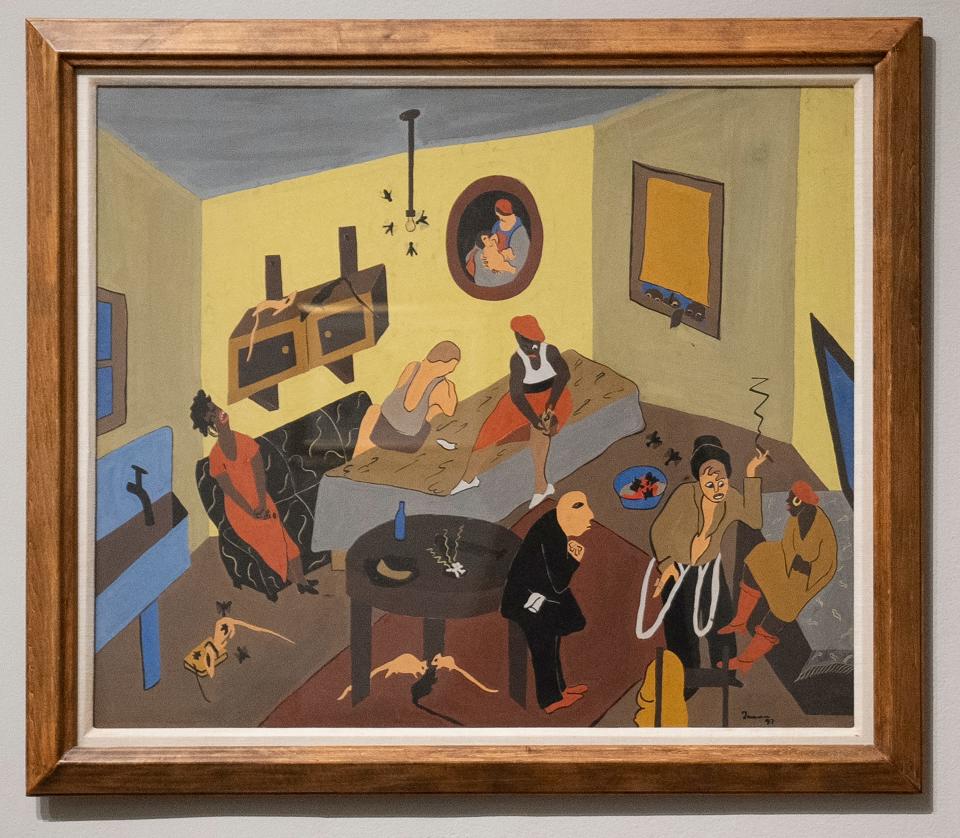
Jacob Lawrence (1917-2000)
Known for his depiction of African American historical subjects such as the Great Migration, World War II and the civil rights movement, as well as contemporary everyday life, Lawrence has been the subject of many major retrospective exhibitions. His work is represented in hundreds of museum collections. The Columbus Museum's three pieces by Lawrence include one in Gallery 1 and another in Gallery 4.
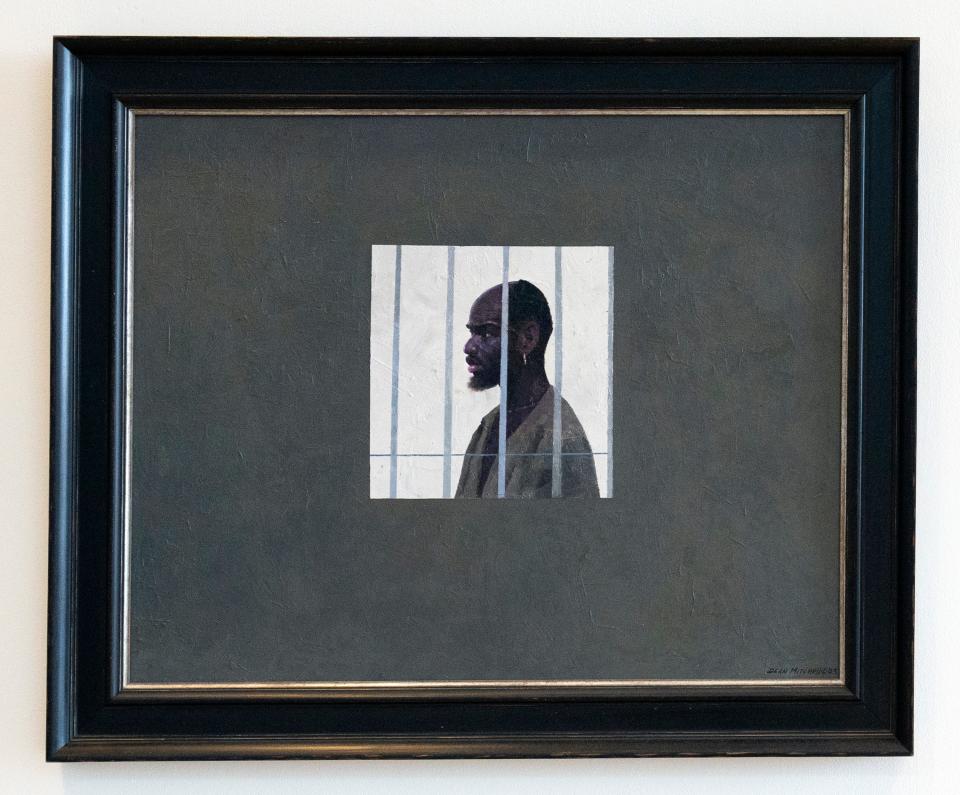
Dean Mitchell (b. 1957)
An award-winning alumnus of the Columbus College of Art & Design, Mitchell is well-known for his landscapes and figures, often showing middle- and lower-class people and regions from his Southern upbringing. He is skilled in several mediums - oil, watercolor, pastel and egg tempera, among them.
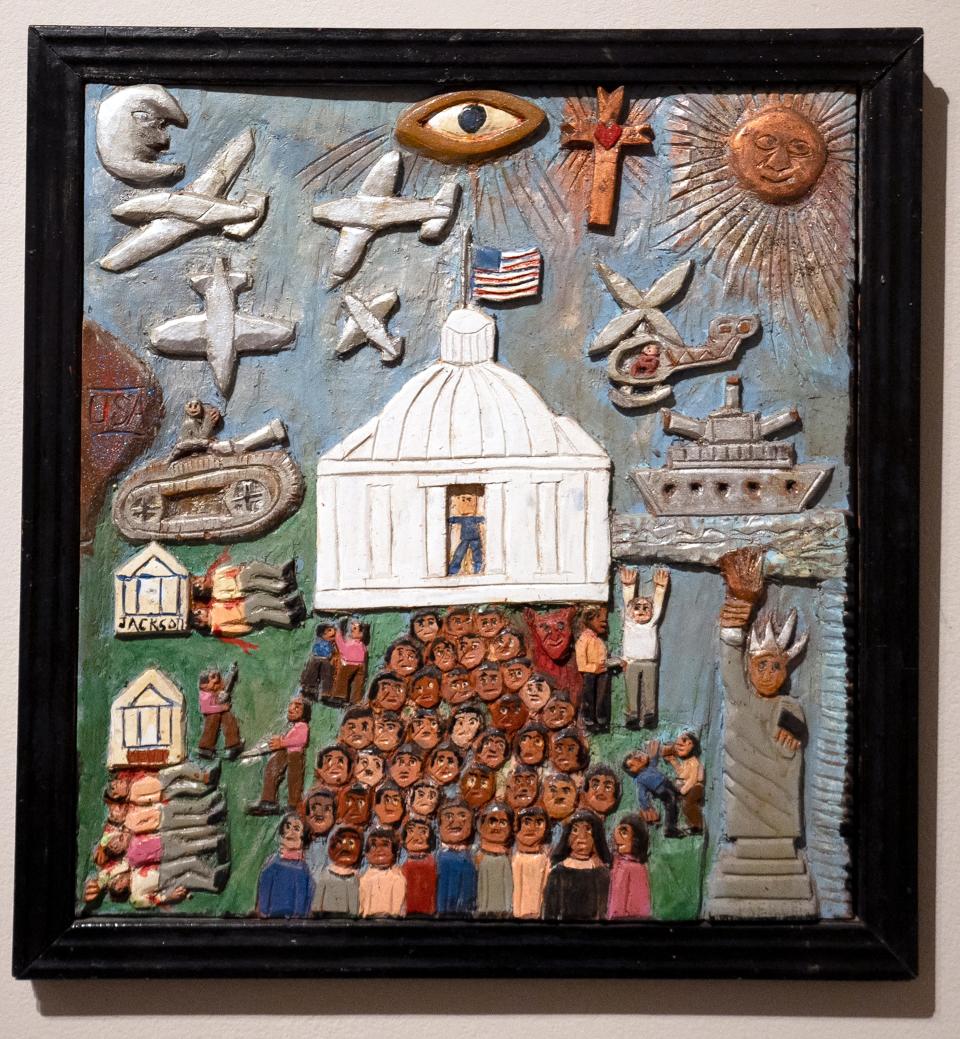
Elijah Pierce (1892-1984)
Elijah Pierce, a carver heralded as one of Ohio’s great artists, spent most of his life working in Columbus as an artist, barber and lay minister. Though widely known for biblical scenes, his work also includes secular carvings that reflect his personal interests. The Columbus Museum of Art has 10 of his works on view and about 90 in its total collection, making it the largest institutional collection in the world, according to museum curators.
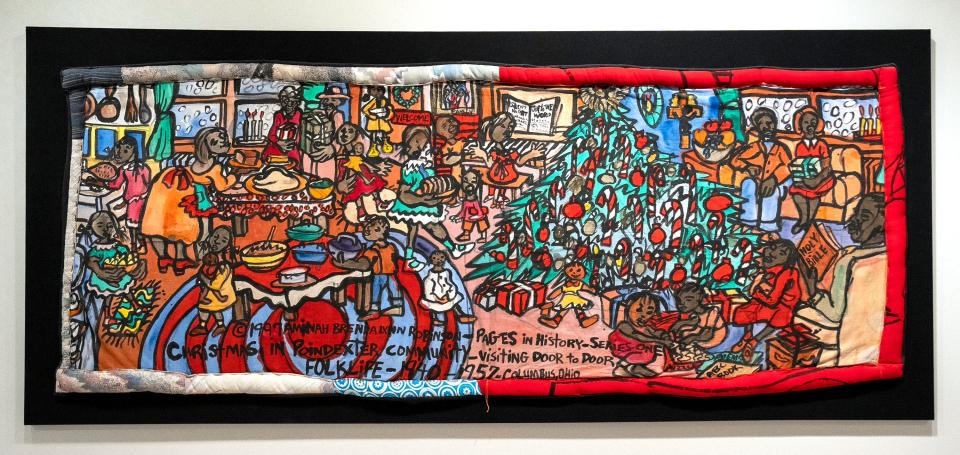
Aminah Robinson (1940-2015)
Celebrated Columbus artist and visual storyteller Aminah Robinson was a prolific producer of a diverse oeuvre that included drawings, woodcuts and elaborate sculptures made from synthetic and natural materials. Robinson received numerous grants and fellowships, and her work is shown in museums and galleries including Akron Art Museum, the Brooklyn Museum of Art, the Baltimore Museum of Art, the Studio Museum in Harlem and the National Underground Railroad Freedom Center in Cincinnati. Upon her death, she bequeathed her estate to the Columbus Museum of Art.
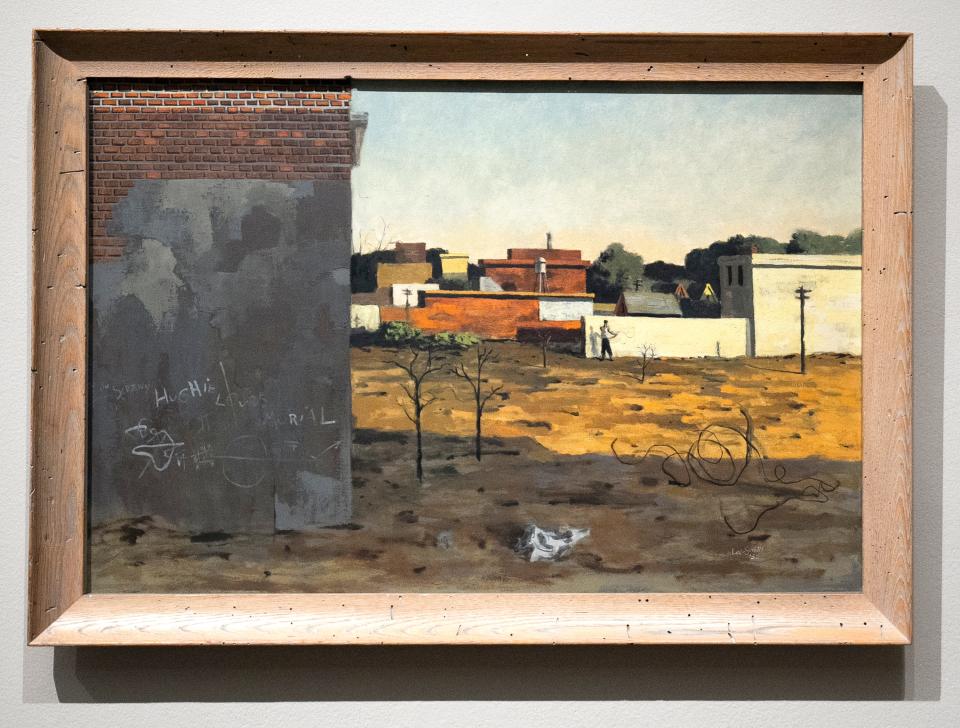
Hughie Lee-Smith (1915-1999)
This classically trained artist's influences include the metaphysical imagery of Italian painter Giorgio de Chirico and the romantic realism of Edward Hopper. Though Lee-Smith felt a sense of 'aloneness' and alienation because he was Black, he nevertheless sought to create art that expressed his emotions about social and cultural disparity as it related to all of humanity.
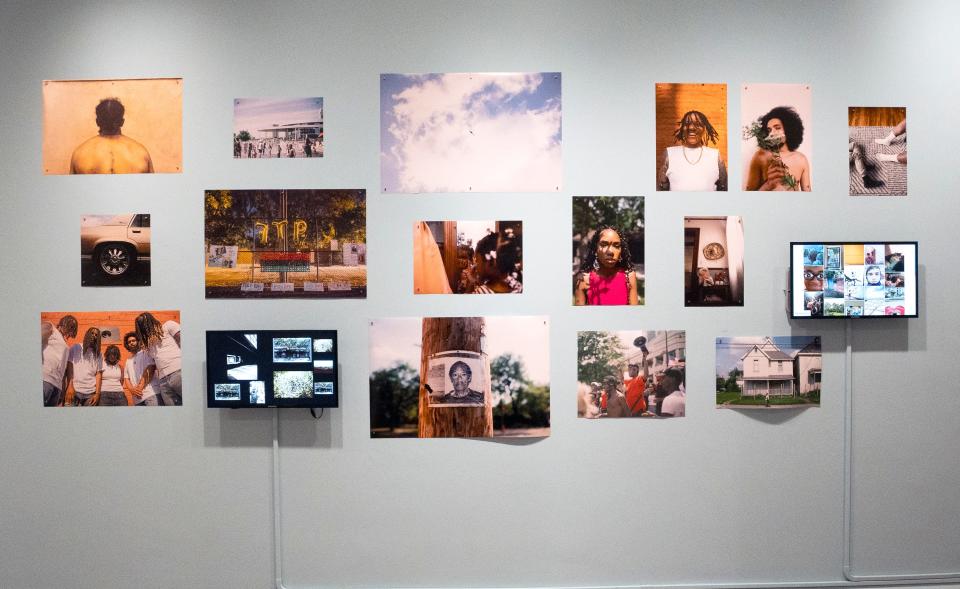
Wyze
Wyze shares her perspective through the lens of a camera - via both photography and filmmaking. “A Wyze World,” a participatory photo installation commissioned by the Columbus Museum of Art, shows her unique vision of what "home" means.
This article originally appeared on The Columbus Dispatch: Columbus Museum of Art collections include numerous Black artists

